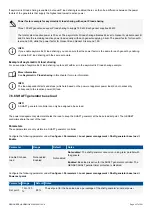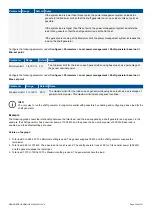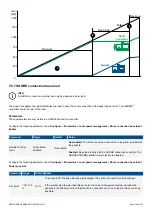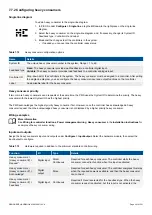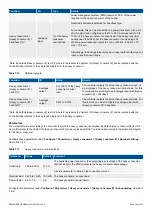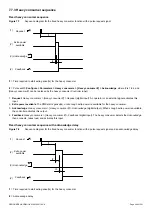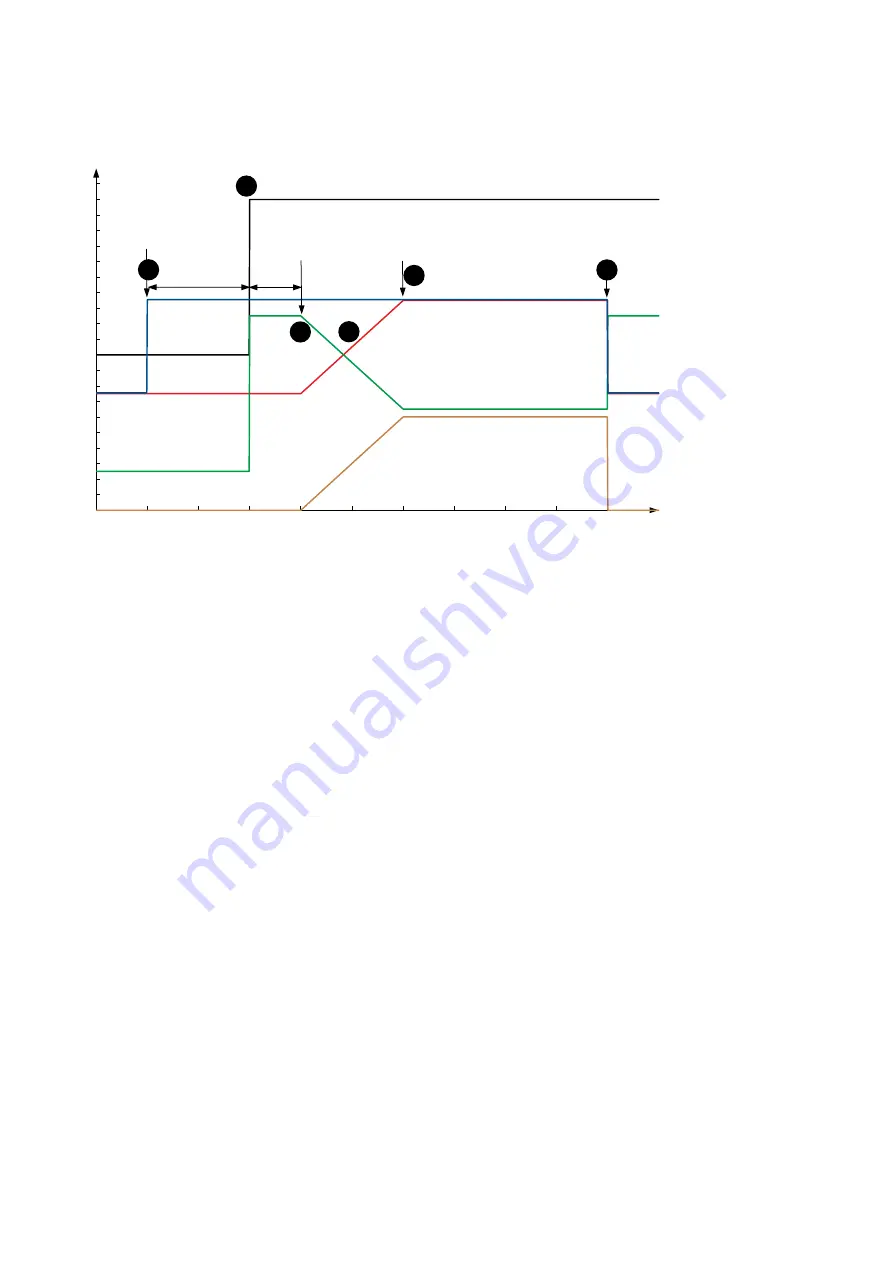
Variable load example
The following graph shows the effect of a heavy consumer with a variable load.
Figure 7.10
Example of heavy consumer with variable load
s1
s4
t1
t2
s2
s3
Power
time
Nominal power
Consumed power
Available power
Required power
Heavy
consumer
power
Available
power
Nominal power
Available
power
Required
power
Consumed
power
1
2
3
4
5
6
s1 = Heavy consumer request on
s2 = Heavy consumer starts
s3 = Heavy consumer full power
s4 = Heavy consumer request off
t1 = Genset start time
t2 = Delay
Points on graph
1. An operator or an external signal activates the
Heavy consumers > [Heavy consumer #] > Request
. The required power is more
than the nominal power, so the PMS sends a start command to a genset.
2. The genset starts and connects, so that the nominal power is more than the required power. The controller activates the
Heavy
consumers > [Heavy consumer #] > Acknowledge
.
3. The heavy consumer connects and starts taking load.
4. The heavy consumer power consumption increases. This increases the consumed power, and decreases the available power.
5. The heavy consumer runs at full power.
6. The heavy consumer disconnects and the operator or an external signal deactivates the heavy consumer request. The
consumed power and required power drop, and the available power rises.
7.7.5 Fast load-reduction
The power management system uses the AC measurements to calculate the system's available power. The available power is
available as an analogue output, with an operate time of less than 100 milliseconds. You can connect this output to a load controller,
for example, a thruster or a crane, to have fast load-reduction when the available power is too low.
DESIGNER'S HANDBOOK 4189340911K UK
Page 268 of 521




